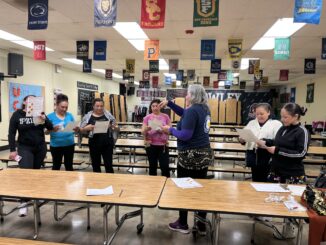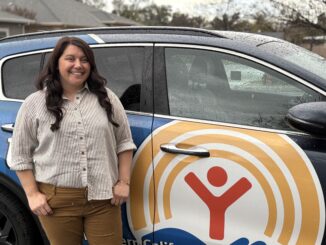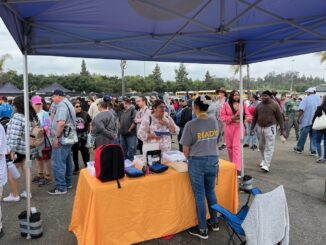
State Senator Angelique Ashby shares the importance of having a family preparedness partnership in times of emergency
by Dorsey Griffith
For 12 years, California State Sen. Angelique Ashby represented an area in Sacramento with a devastating history of flooding and concerns about the integrity of the levees built to protect her growing community of constituents.
Her tenure on the Sacramento City Council followed the catastrophic flooding caused by Hurricane Katrina in New Orleans, and Senator Ashby was determined to protect her district in the Natomas from suffering the same fate.
“We had to be prepared for a major incident,” she says. “The levees had been decertified by the Army Corps of Engineers, which had changed their standards after 100,000 people were living there, along with all kinds of valuable infrastructure. We had to make improvements to the levees.”
“Sometimes, what one culture or group would turn to as a trusted source is very different from another. Listos California is community-led and engages people and community leaders who are reliable partners, preparing them and creating an ongoing relationship.”
Angelique Ashby, California State Senator, 8th District
Just as Senator Ashby understands that the government must ensure that levees are strong, she believes that residents have a role to play to protect themselves and their loved ones during disasters. That’s why she has been a vocal supporter of the Office of Emergency Services’ disaster preparedness efforts.
The California Governor’s Office of Emrgency Services’ (Cal OES’s) Ready Reps and Listos California programs promote five steps for disaster preparedness, including having a readiness plan to protect yourself, your family, neighbors and friends. Readiness plans include a list of names and contact information to be shared with each person on the list, along with one person unlikely to be affected whom everyone can check in with to confirm they are safe. Plans should also include a local resource directory with phone numbers and websites of those who can help in an emergency, as well as an evacuation plan.
“It’s good to know where all the paperwork is and any medicines are if you need them,” Senator Ashby says. “You need provisions for your animals or the folks who depend on you like small children, people with disabilities and seniors. You might have a kid in college you need to help prepare. Understanding where to get the right information and in the right moment is critically important,” she says. “You can plan for that.”
Senator Ashby emphasizes that knowing your safest escape route in case of a flood, fire, or other emergency is just as important. Evacuation routes can differ significantly based on the type of emergency and its location. For instance, a flood upstream of Oroville requires people to head south for safety. If a weir fails in Sacramento, the routes will change depending on residents’ locations.
Senator Ashby attended the Listos California Summit in September 2024, one of several meetings held throughout the state designed to allow local leaders to learn about California’s emergency response system and strengthen community resilience.
“I was incredibly impressed with the number of languages and diverse communities Listos California has been able to reach and to develop community relationships with,” she says. “Sometimes, what one culture or group would turn to as a trusted source is very different from another. Listos California is community-led and engages people and community leaders who are reliable partners, preparing them and creating an ongoing relationship.”
As a policymaker in a large state prone to various disasters, Senator Ashby has learned that individuals must be prepared, and that communities and governments must collaborate to employ multiple communication strategies in order to connect with different populations and regions across the state. Cal OES’s Ready Reps program employs an on-the-ground, community peer-to-peer outreach strategy, while the Listos Program provides statewide culturally competent messaging, two important sides of the same coin.
“Anything can happen, and when it does, how we communicate about it is complicated,” she says. “There are 40 million of us. The number of languages, cultures, and lifestyles in California is endless. We have people who live in rural areas, on farms, on the beach, in the mountains, and in our cities. It’s different for everybody. We can’t take a cookie-cutter approach. We need partnerships.”
For more information about making a readiness plan and other tips to help prepare for emergencies, visit the California Governor’s Office of Emergency Services’ Listos California website at www.listoscalifornia.org.




